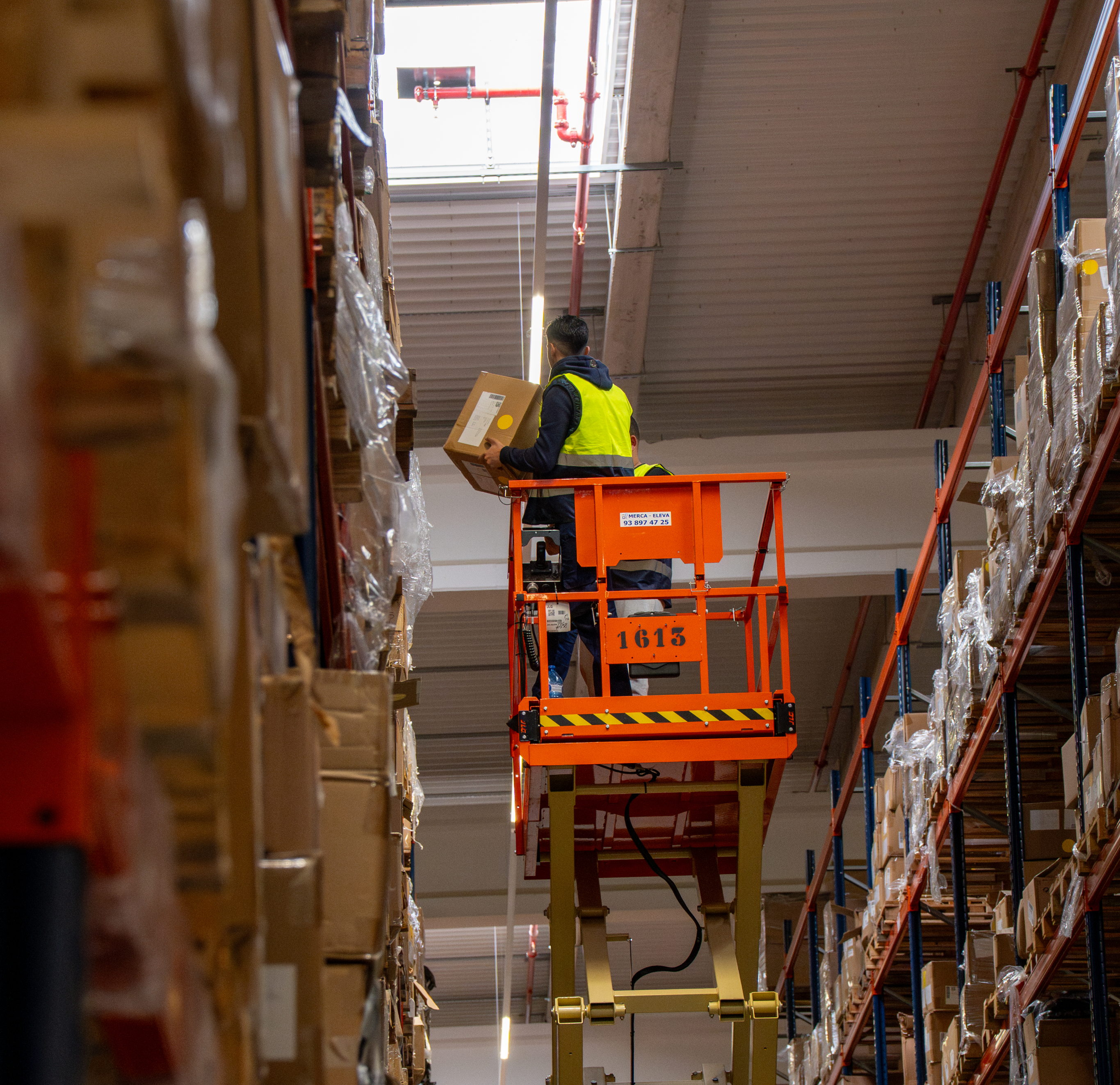Would you like to improve the efficiency of your warehouse and optimize the space available? If you are responsible for logistics or inventory management, slotting is a technique that can transform the way you organize your products.
What is slotting?
Slotting is the process of assigning the most appropriate locations within a warehouse for each product based on its characteristics, demand and turnover. This strategy seeks to maximize the use of space, reduce picking times and improve operational efficiency.
The objective of logistics slotting is to ensure that the best-selling products are closer to the outbound areas, while products with lower turnover are placed in less accessible areas. This optimizes workflow and saves time during order picking.
How does slotting work?
Slotting works in a simple way: products are analyzed according to their sales frequency, size, weight and type, and then assigned to a strategic location in the warehouse. Some factors to consider include:
- Frequency of rotation: Products that are sold more frequently should be closer to the picking area, while products with low turnover can be located farther away.
- Size and weight: Larger, heavier products should be located in areas that are easy to reach but do not interfere with the flow of smaller, lighter products.
- Product type: Similar products can be grouped in the same area to facilitate sorting and shipping.
Benefits of Slotting in Warehouse Management
The use of slotting has multiple advantages that directly impact warehouse efficiency and productivity. Here are some of the main benefits:
1. Reduction of picking times
When the most requested products are closer to the shipping area, the time it takes for staff to pick the items decreases considerably. This speeds up order picking and improves response times.
2. Better space utilization
Logistics slotting allows products to be organized in a way that maximizes warehouse space, avoiding the accumulation of merchandise in less useful areas. This optimizes warehouse capacity and facilitates product flow.
3. Reduction of errors
By having products organized logically and efficiently, errors are less likely to occur during picking or shipping. This improves accuracy and customer satisfaction.
4. Resource optimization
Proper warehouse organization allows employees to work more efficiently, which reduces physical strain and improves overall team productivity.
How to implement slotting in your warehouse?
Implementing logistics slotting may seem challenging at first, but with the right approach, the benefits far outweigh the initial efforts. Here are some steps to implement it effectively:
1. Product analysis.
The first step is to conduct a detailed product analysis. It is essential to know the sales frequency, size, weight and special characteristics of each product. This information will be the key to decide its location in the warehouse.
2. Segmentation of the warehouse
Once the information has been analyzed, the warehouse can be segmented into different zones based on product rotation and characteristics. For example, the warehouse can be divided into areas for high, medium and low rotation products.
3. Use of technology
Technology plays a key role in the implementation of slotting. Many companies use warehouse management software (WMS) to help them optimize bin allocation and improve inventory visibility.
4. Continuous review
Slotting is not a one-time process; it must be reviewed and adjusted regularly. Product demand can change over time, so it is important to make periodic adjustments to product placement to ensure that the warehouse remains efficient.
How does slotting complement a logistics sorter?
Slotting can be perfectly complemented by a logistics sorter. A sorter is an automated system that helps sort and distribute products within the warehouse efficiently. When both systems are combined, the sorter helps to automate the sorting and distribution of products that have been previously organized with the slotting method.
For example, if high turnover products have been placed in areas close to the picking area, the logistics sorter will be able to automatically direct these products to the warehouse exit without the need for an operator to move them manually, further optimizing the workflow.
Conclusion
Slotting is one of the best strategies to improve your warehouse management. By organizing products according to their rotation and characteristics, you can increase operational efficiency, reduce picking times and improve space utilization.
If you want to take your company's logistics to the next level, implementing a logistics slotting system along with other advanced solutions, such as a sorter, can be the key to optimizing your warehouse and improving customer satisfaction.
If you need help implementing an efficient logistics system, at Amphora Logistics we offer customized solutions to optimize your business supply chain, contact us and find out how we can help you!
